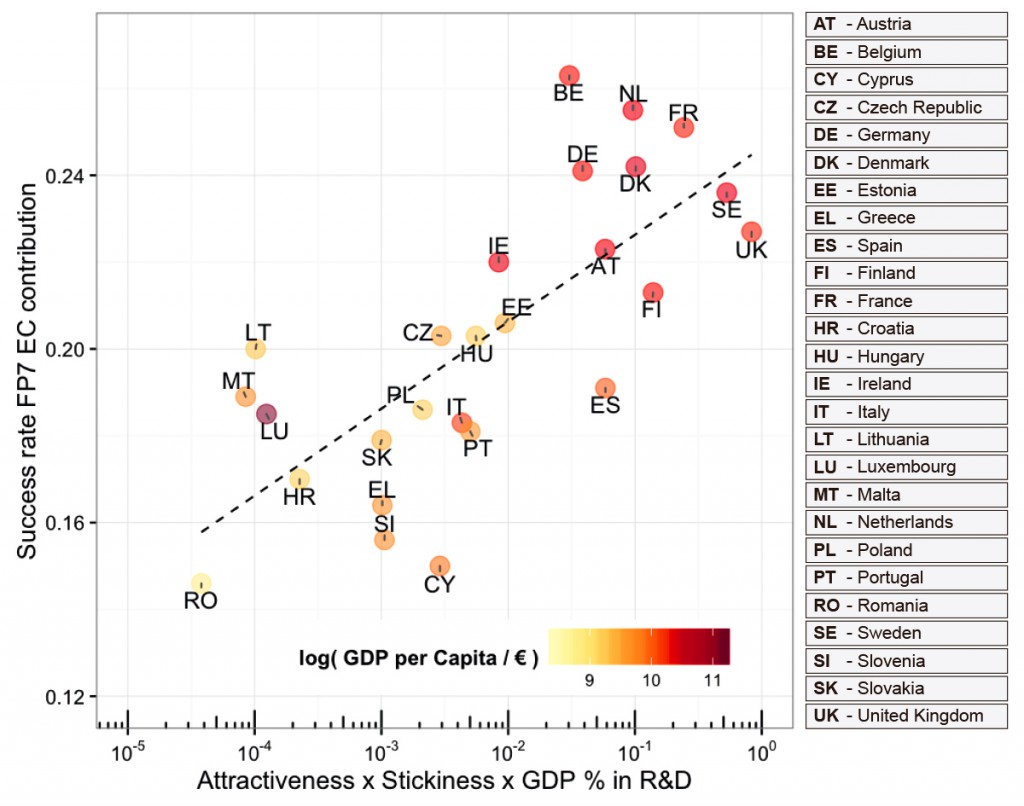05/05/2016
Countries that are better at retaining and attracting researchers get more European funding
This is the conclusion of a study conducted by URV researchers Manlio de Domenico and Àlex Arenas, who have analysed the mobility indicators of EU scientists, the capacity of countries to attract new researchers and to retain talent, and the correlation between these measures and GDP investment in research. The results have been published in Nature

This is the conclusion of a study conducted by URV researchers Manlio de Domenico and Àlex Arenas, who have analysed the mobility indicators of EU scientists, the capacity of countries to attract new researchers and to retain talent, and the correlation between these measures and GDP investment in research. The results have been published in Nature
Obtaining money for research is determined, above all, by the way in which governments go about retaining their own scientists and attracting researchers from abroad. Two researchers from the URV’s Department of Computer Engineering and Mathematics, Manlio de Domenico and Àlex Arenas, have analysed indicators on researcher mobility between 2007 and 2014 to determine the capacity of European countries to attract scientists from outside these countries and, likewise, their ability to prevent the loss of talent. They found that the higher the scores for the indicators of attraction and retention, the more likely countries were to obtain European research funding.
The most attractive countries for foreign researchers are Switzerland and the United Kingdom, with the latter, alongside Israel, also having the highest rate of retention. The researchers highlight the case of Italy, which in seven years of funding has lost many of its scientists and has been unable to attract foreign talent, in contrast with the situation in Switzerland, the United Kingdom, Sweden, Norway, Austria, France and Spain, to mention the most prominent. Another important case is Israel, which lies around mid-table in terms of attracting foreign researchers but takes the top spot when it comes to retaining talent, which means that it is not a particularly attractive country for foreign researchers but it is the one that best looks after its own researchers to prevent them from leaving. A similar trend was also observed for the United Kingdom, Sweden and France.
Overall, the United Kingdom and Sweden have the highest scores for both indicators, whereas Italy has the lowest scores both for retention and attraction. The researchers conclude that the highest scoring countries benefit from the “rich get richer” effect, given that they also have a higher GDP per capita and tend to invest more in research and development than the other countries. This means that they can attract and retain the best researchers with competitive salaries and a guaranteed future in research.

The analysis compares the countries’ scores for talent retention, talent attraction and investment of GDP in research with their success rates in obtaining funding from the seventh framework programme. A quantitative analysis reveals that a country’s level of R+D investment is as important as a government’s ability to attract foreign scientists with, for example, competitive salaries, or its capacity to retain talent through mechanisms that guarantee a future in research.
Reference: Domenico, Manlio; Arenas, Alex. “Researcher incentives: EU cash goes to the sticky and attractive”. Nature. 2016/03/31 http://dx.doi.org/10.1038/531580c
More news about: Alex Arenas, Manlio de Domenico
